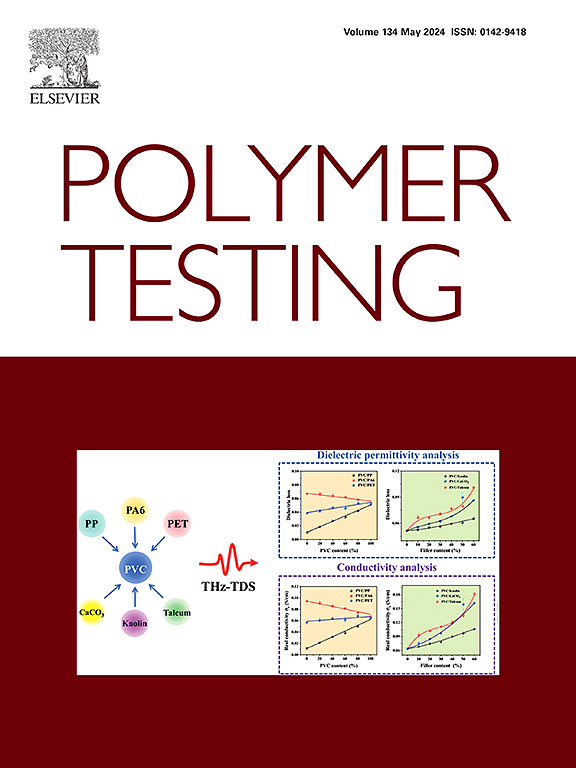Damage evolution and toughening mechanism in brick-and-mortar structure: Essential role of interface thickness ratio
IF 5
2区 材料科学
Q1 MATERIALS SCIENCE, CHARACTERIZATION & TESTING
引用次数: 0
Abstract
The brick-and-mortar structure, known for its excellent mechanical properties, holds significant potential in biomimetic design. However, the effect of the interface on damage evolution and toughening mechanism remains unclear. This study employed 3D printing to fabricate brick-and-mortar structures with different interface thickness ratios and examined their mechanical properties and damage evolution through quasi-static tensile tests and digital image correlation (DIC) technology. The results indicate that increasing the interface thickness ratio reduces yield strength, fracture strength, and elastic modulus while increasing fracture strain. Higher interface thickness ratios also intensify interface damage, increase separation length, and cause the fracture mode of the brick-and-mortar structure to transition from hard phase fracture to pull-out fracture, significantly enhancing ductility. To elucidate the effect of interface thickness on elastic modulus, theoretical models based on tension-shear chain (TSC), shear-lag (SL), and strain gradient theory based on shear-lag (SGSL) models were applied and validated with experimental data. At higher thickness ratios, tensile deformation is dominated by the hard phase, necessitating a larger aspect ratio to counteract the low modulus of the interface. To achieve optimal mechanical performance, the study introduced an optimal aspect ratio and explored the synergistic optimization of interface thickness and the aspect ratio of the hard phase. The optimal aspect ratio can effectively compensate for the low modulus of the interface, thereby optimizing the balance between mechanical strength and toughness. These findings provide a reference and basis for future biomimetic material design.
求助全文
约1分钟内获得全文
求助全文
来源期刊

Polymer Testing
工程技术-材料科学:表征与测试
CiteScore
10.70
自引率
5.90%
发文量
328
审稿时长
44 days
期刊介绍:
Polymer Testing focuses on the testing, analysis and characterization of polymer materials, including both synthetic and natural or biobased polymers. Novel testing methods and the testing of novel polymeric materials in bulk, solution and dispersion is covered. In addition, we welcome the submission of the testing of polymeric materials for a wide range of applications and industrial products as well as nanoscale characterization.
The scope includes but is not limited to the following main topics:
Novel testing methods and Chemical analysis
• mechanical, thermal, electrical, chemical, imaging, spectroscopy, scattering and rheology
Physical properties and behaviour of novel polymer systems
• nanoscale properties, morphology, transport properties
Degradation and recycling of polymeric materials when combined with novel testing or characterization methods
• degradation, biodegradation, ageing and fire retardancy
Modelling and Simulation work will be only considered when it is linked to new or previously published experimental results.
 求助内容:
求助内容: 应助结果提醒方式:
应助结果提醒方式:


